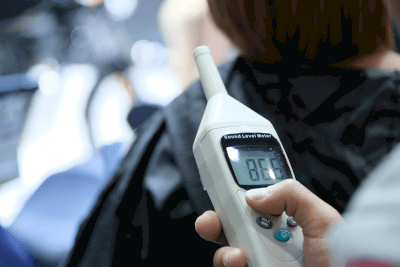What Is an Environmental Monitoring System?

From an environmental protection standpoint, various laws, such as the Water Pollution Control Law and the Air Pollution Control Law, impose regulations on factories and business establishments. To comply with these regulations, environmental monitoring systems are used to measure parameters such as humidity, temperature, wind velocity, noise, solar radiation, gases, and alcohol concentration.
Typically, most environmental monitoring systems measure only one ecological parameter. However, multi-environmental monitoring systems can measure temperature, humidity, wind velocity, noise, and other parameters in a single unit. These instruments are essential for maintaining a safe working environment in factories.
Uses of Environmental Monitoring Systems
Instruments used for environmental monitoring include systems for measuring and analyzing water pollution, equipment for analyzing and measuring air pollution, noise and vibration measurement devices, gas detectors, and other weather observation equipment.
Within the realm of environmental measuring instruments are also detector tubes that assess the concentration of gases in the air affecting human health and alcohol checkers that measure breath alcohol concentration.
Other applications include:
- Heat and dust measurement devices.
- Noise meters.
- Anemometers.
- Indoor/outdoor thermometers that compare and display indoor and outdoor temperatures to assess workplace conditions.
Principles of Environmental Monitoring Systems
Environmental monitoring systems encompass various equipment designed to measure humidity, temperature, wind velocity, noise, solar radiation, and other parameters in a workplace environment.
Gauss meters also fall under the category of environmental monitoring systems, measuring rare earth magnets, electromagnetic coils, and electromagnets.
In the transportation industry, alcohol checkers are mandatory for preventing drunk driving. These devices assess alcohol concentration by analyzing the breath of individuals.
Environmental monitoring systems are often used outdoors, and most are designed for portability, typically weighing 500 g or less.
In recent years, multi-environmental monitoring systems have been developed, capable of performing multiple measurements with a single unit, reducing the burden on the operator.
Many of these systems are waterproof and suitable for outdoor measurements in various weather conditions.
Some models come equipped with additional features such as 24-hour continuous monitoring and alarms that alert users when specific temperature or humidity thresholds are reached.
Particularly, in times of extreme heat, heatstroke prevention products with alarms for preset temperature and humidity levels are valuable in nursing care facilities, schools, construction sites, and other locations.